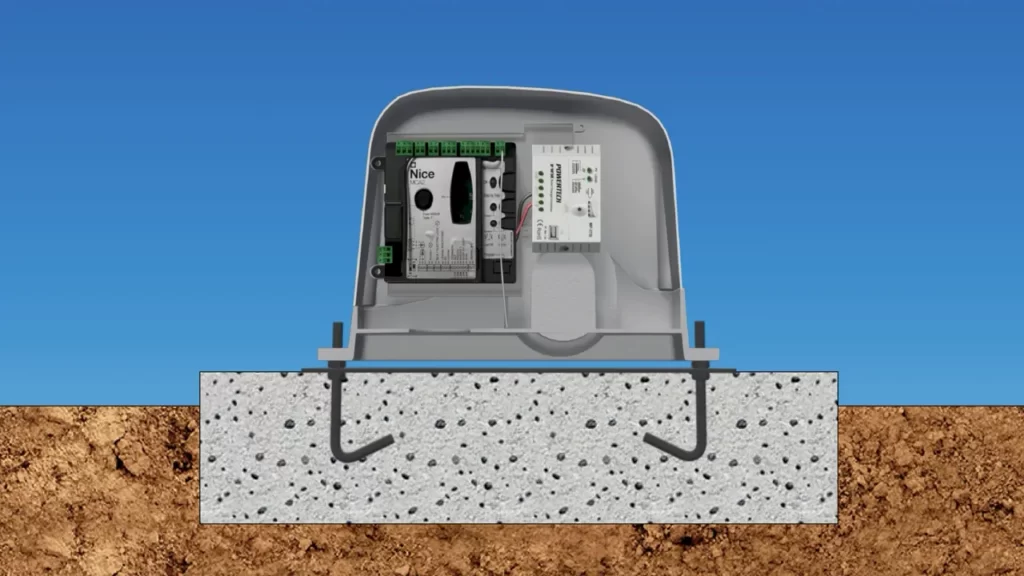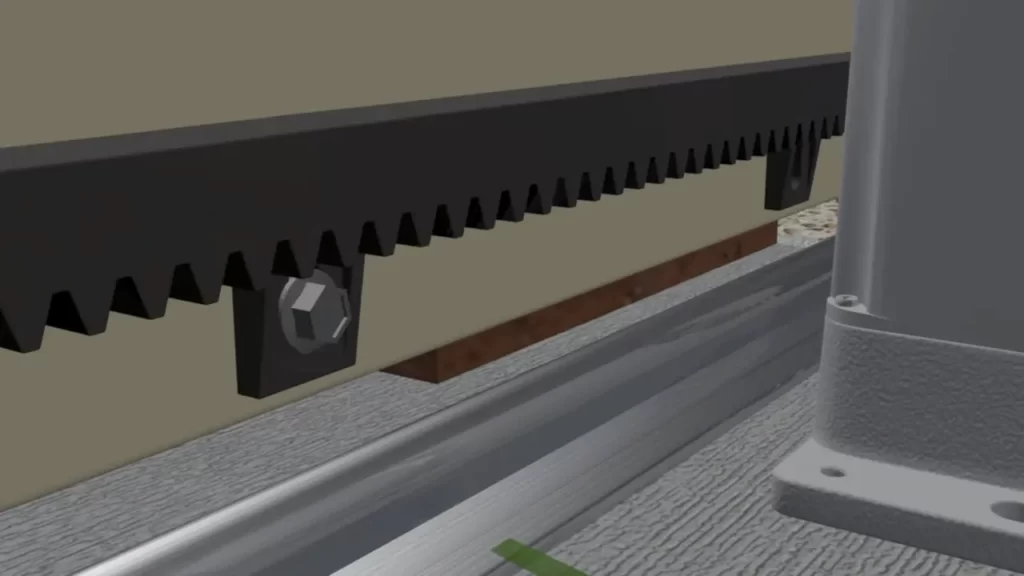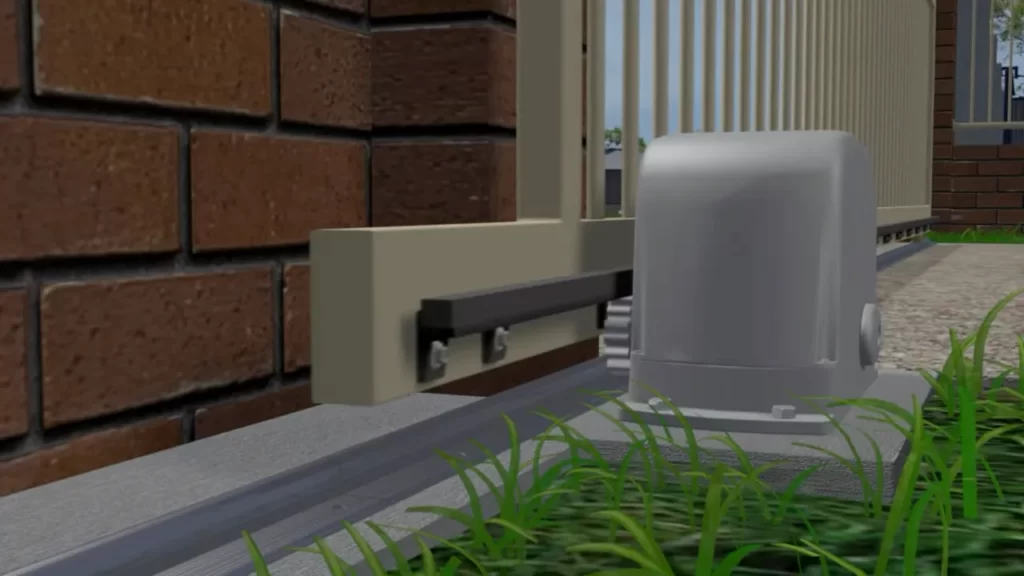To install a sliding gate opener, you need to follow specific steps and adhere to the manufacturer’s instructions. It is crucial to ensure that you have the necessary tools and equipment ready, such as a power drill and socket set, before beginning the installation process.
Additionally, you’ll need to measure the gate and determine the appropriate opener size and type. It’s important to note that the installation process may vary slightly depending on the brand and model of the sliding gate opener. By carefully following the instructions and taking necessary safety precautions, you can successfully install a sliding gate opener and enhance the convenience and security of your property.

Getting Started With Sliding Gate Openers
When installing a sliding gate opener, it is important to choose the right one for your specific needs. There are various types and models available in the market, so it is crucial to understand the components and functions of a sliding gate opener. These openers typically consist of a motor, control panel, gearbox, and a remote control. The motor is the core component that powers the gate to open and close. The control panel is responsible for controlling the motor and managing the operation of the gate opener. The gearbox is responsible for transferring the motor’s power to the gate. Choosing the right sliding gate opener depends on factors such as the size and weight of your gate. It is essential to select an opener that can handle the weight of the gate and provides sufficient power for smooth operation. Considering factors such as power source, safety features, and warranty can also help in making the right decision. By understanding the components and making a well-informed choice, you can ensure a successful installation of a sliding gate opener.
Preparing The Installation Site
Assessing the gate and installation requirements is the first step in preparing for the installation of a sliding gate opener. It is crucial to understand the dimensions and weight of the gate to ensure that the gate opener is compatible and can handle the load. Clearing debris and obstructions in the installation area is necessary to create a safe and obstacle-free environment for the gate opener to function properly.
Moreover, ensuring a proper electrical supply for the gate opener is vital for its functionality. The gate opener usually requires a dedicated electrical circuit and should be positioned close to an electrical outlet. It is essential to consult an electrician to assess the electrical capacity of the installation site so that the gate opener can operate without any issues.
Installing The Sliding Gate Opener

Installing the Sliding Gate Opener
Mounting the sliding gate opener on the gate: Start by securing the opener to the gate using the provided mounting brackets. Ensure that the opener is centered and aligned properly on the gate. Use screws or bolts to firmly attach the opener to the gate, making sure it is secure and stable.
Connecting the opener to the gate’s track and wheels: Next, connect the opener to the gate’s track and wheels. Slide the opener’s drive mechanism onto the gate’s track, ensuring a snug fit. Attach the opener’s drive chain or belt to the gate’s wheels, ensuring that it is properly tensioned. This will allow the opener to move the gate along the track smoothly.
Installing safety sensors and limit switches: It is important to install safety sensors and limit switches to ensure the safe operation of the sliding gate opener. Place the safety sensors near the gate’s opening and ensure they are aligned properly. Connect the sensors to the opener, following the manufacturer’s instructions. Install the limit switches to control the gate’s movement and prevent any potential accidents.
Wiring the opener to the power source: Connect the opener to the power source, following the provided instructions. Use appropriate wiring techniques to ensure a secure and reliable connection. Test the opener to ensure it is functioning correctly before completing the installation process.

Testing And Adjusting The Sliding Gate Opener
Installing a sliding gate opener can enhance the convenience and security of your property. Once the installation is complete, it is crucial to test and adjust the opener to ensure its smooth operation. Start by checking the movement of the gate after installation. Ensure that it opens and closes fully without any obstructions or binding. Adjust the opener’s force and speed settings to achieve the desired performance. Increasing the force setting can help overcome any resistance encountered during the gate’s movement, while adjusting the speed settings can control its operating speed. It is equally important to test the safety features of the opener, such as the obstacle detection system and the emergency stop functionality. This will ensure that the gate stops immediately upon encountering an obstruction or when the emergency stop button is pressed. Regularly testing and adjusting the sliding gate opener will not only optimize its performance but also prolong its lifespan.
Troubleshooting Common Issues
| Troubleshooting Common Issues:One common issue that you may encounter when installing a sliding gate opener is gate misalignment. This can cause problems with the smooth movement of the gate and may even result in the motor making unusual sounds. To diagnose and fix this issue, start by inspecting the gate track and wheels. Look for any obstructions or damage that may be causing the misalignment. Adjust the track and tighten any loose screws or bolts. Lubricating the wheels and hinges can also help improve the gate’s movement.Another problem that you may face is related to the functionality of the gate’s sensor and remote control. If the sensor is not working properly, check for any dirt or debris that may be blocking its path. Clean the sensor and ensure that it is properly aligned. For issues with the remote control, try replacing the batteries or reprogramming it according to the manufacturer’s instructions. |
Regular Maintenance And Safety Tips
Regular maintenance and proper safety precautions are essential to ensure the smooth functioning and longevity of your sliding gate opener. One important aspect of maintenance is lubricating moving parts and hinges regularly. This helps to reduce friction and extend the lifespan of the components. Use a high-quality lubricant and apply it to all the necessary areas, such as the rollers, track, and hinges.
In addition to lubrication, it is crucial to inspect and replace worn-out

components. Over time, certain parts of the gate opener may wear out or become damaged due to continuous use or exposure to external elements. Regularly check the condition of the rollers, belts, chains, and other crucial components. If you notice any signs of wear and tear, make sure to replace them promptly to avoid further damage and ensure the safety of the gate operation.
Moreover, it is necessary to ensure proper safety precautions for gate operation. This includes installing safety sensors that can detect obstructions and prevent accidents. Adjust the sensitivity of these sensors as per the requirements. Regularly check the safety features of the gate opener, such as the emergency stop function, and ensure they are working correctly.
Final Thoughts
Installing a sliding gate opener can greatly enhance the convenience and security of your property. With a sliding gate opener, you can effortlessly open and close your gate with just a push of a button. This eliminates the need to manually open and close the gate, saving you time and effort. Additionally, a sliding gate opener provides an added layer of security as it can be equipped with safety features such as automatic closing, infrared sensors, and keypad entry systems. It ensures that only authorized individuals can access your property, giving you peace of mind. Moreover, a sliding gate opener is a durable and long-lasting solution, designed to withstand various weather conditions. It is a worthwhile investment that will improve both the aesthetics and functionality of your gate. Enjoy the convenience and security that a sliding gate opener brings to your property.
Frequently Asked Questions Of How To Install A Sliding Gate Opener
How Do You Install A Sliding Gate?
To install a sliding gate, follow these steps: 1. Measure and prepare the gate opening. 2. Install the gate track and posts. 3. Attach the gate to the track and check functionality. 4. Secure the gate and adjust for proper alignment.
5. Test the gate’s movement and make any necessary adjustments.
What Holds Up A Sliding Gate?
A sliding gate is held up by a track and wheels system that allows it to slide open and closed. The gate is mounted on a track, and wheels are attached to the bottom, which helps it move smoothly along the track.
How Long Does It Take To Install A Sliding Gate?
A sliding gate installation typically takes around 1 to 2 days, depending on the complexity and size of the gate. Professional installers will ensure a seamless process, ensuring the gate functions properly and meets your requirements. Get a quote and schedule the installation to secure your gate swiftly.
Conclusion
Installing a sliding gate opener may seem like a daunting task, but with the right guidance, you can easily get it done. Remember to carefully follow the manufacturer’s instructions and take safety precautions. By installing a sliding gate opener, you can make your life more convenient and secure.
So, why wait? Go ahead and start enjoying the benefits of a smoothly operating sliding gate.
